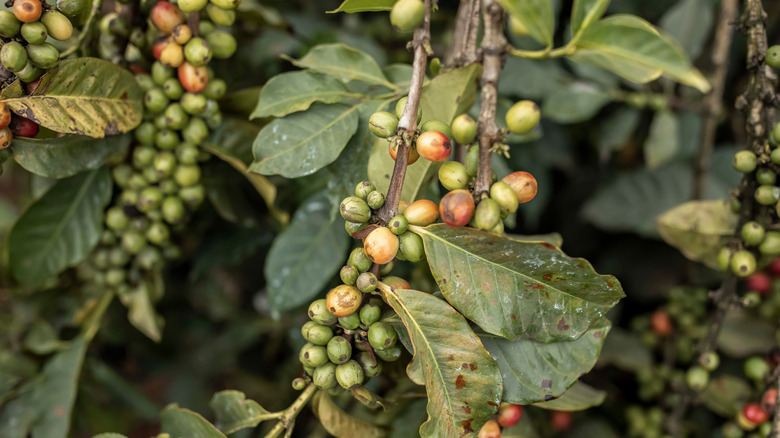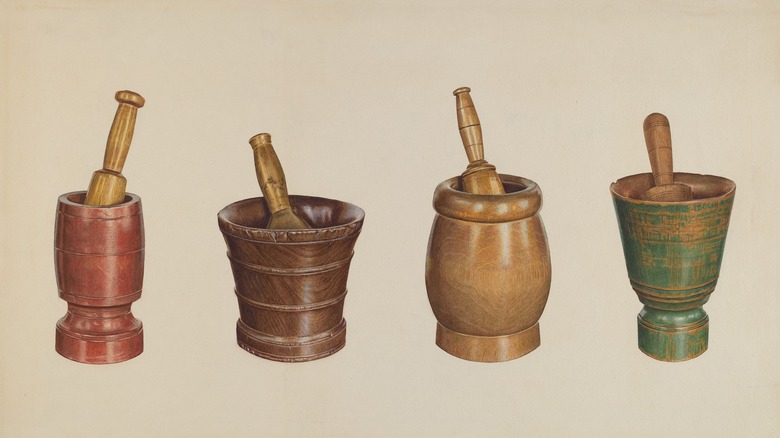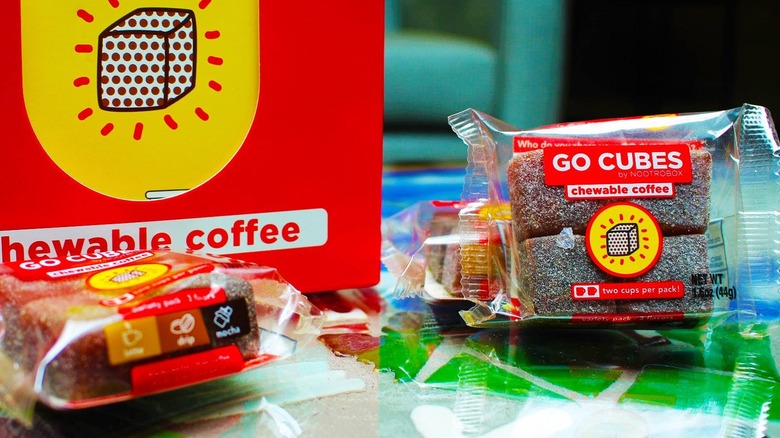Before It Was Sipped, Coffee Was Actually Once Chewed
Every coffee consumer has their own way of taking their morning dose of caffeine. One person might be content to add an unspecified dash of cream and sugar, while another will measure out the perfect amount of frothy nut milk, and yet another will push all adornments aside. Despite these differences, most will likely enjoy their morning cup (emphasis on "cup") in liquid form (via the Paulig Barista Institute). That may have not always been the case.
The history of coffee is shrouded in mystery, but the National Coffee Association cites a theory that traces its origin back to the ancient coffee forests of Ethiopia, courtesy of a goat herder named Kaldi. Legend has it that he took interest in the coffee plant after noticing the burst of energy it gave his goats. Instead of roasting the beans and brewing them into a warm beverage, however, Kaldi and his coffee-adoring peers at the local monastery ground up the "cherries" of the coffee tree and rolled them into a ball of energy.
Coffee and breakfast in one bite
Many of us think of coffee beans as dried-out brown kernels with a split center. But before coffee beans are ready to brew, they look more like the red berries on a holly branch. According to PBS, early preparations of coffee in Africa involved crushing up those berries and mixing them with animal fat, creating a very potent energy bar. The coffee innovations that followed largely favored liquid form (including a "wine-like concoction" made from fermented pulp of the berries), but coffee as we know it didn't appear until the 13th century when people in Arabia started roasting the beans.
For several centuries that followed, Africa and Arabia were the world's sole coffee purveyors, says PBS. They were unchallenged until the 1600s, when an Indian pilgrim named Baba Budan brought a modest crop of beans with him after departing from Mecca, giving way to the European coffee trade (via Akara Coffee).
A modern resurgence
Liquid coffee is invariably the most popular way to consume the energy-boosting ingredient today, but those chewable energy bars from the days of yore (sans the animal fat) are still around. An Insider article from 2017 introduces Go Cubes, which are "chewable coffee cubes with a fluffy, gummy texture." Each vegan and gluten-free cube, which the reviewer likens to Sour Patch Kids, contains 50mg of caffeine, making it equal to half a cup of coffee. According to the product's sales listing on Jebiga, the cubes come in mocha, "pure drip," and latte flavors.
That same year, Simplemost predicted that chewable coffee "might be the next new coffee trend," citing the convenient portability of Go Cubes. As far as we can tell, chewable coffee didn't take off as much as expected. That said, Go Cubes still exist, as do other coffee-centric energy bites like Quantum and Seattle Gummy Company Mocca Shots.


